Ascending Reticular Activating System
Ascending reticular activating system. Glasgow Coma Scale GCS scores were used for evaluation of subject consciousness. The ascending reticular activating system projects to the intralaminar nuclei of the thalami which projects diffusely to the cerebral cortex. The reticular activating system is a short pencil-sized piece of the brain located just above where the spinal cord is attached to the brain.
The ascending projections of the reticular activating system enhance the attentive state of the cortex and facilitate conscious perception of sensory stimuli. The Reticular Activating System RAS also called extrathalamic control modulatory system controls everything from wakefulness orexinhistamine to focus dopamineglutaminergic fight and flight activation and how we perceive the world. If its working against you students will be sluggish sleepy and checked out.
With its help students are awake alert and engaged. The ascending activating reticular system is a fundamental part of the vertebrate nervous system since is responsible for the regulation of wakefulness and sleep-wake transitions. The arousal component of the consciousness is generated by the ascending reticular activating system ARAS.
According to previous findings that norepinephrine NE-ergic and GABA gamma-amino butyric acid-ergic inputs convey thermal information to the CNS those neurotransmitters may be responsible for reciprocal correlation between body temperature and. The Reticular Activating System is either your friend or your foe as a teacher. The reticular activating system is - it starts above your spinal cord and its about two inches long its about the width of a pencil and its where all your senses come in.
12983685 No abstract available. Between the brainstem and the cortex multiple neuronal circuits ultimately contribute to the RAS. 11 rows Introduction.
The Ascending Reticular Activating System. We investigated the relationship between consciousness and the ascending reticular activating system ARAS by using diffusion tensor tractography DTT in patients with traumatic brain injury TBI. Well except for your smell which goes into your emotional center of your brain but the rest of them come in through the RAS and what the RAS does is really connect that subconscious part of our brain with the.
The Ascending Reticular Activating System. Abstract Introduction We investigated differences in the ascending reticular activating system ARAS injuries between patients with mild traumatic brain injury mTBI and cerebral concussion by using diffusion tensor tractography DTT.
We recruited TBI patients and normal subjectsWe reconstructed the lower ARAS and five parts of upper ARAS prefrontal cortex PFC premotor.
The ascending reticular activating system projects to the intralaminar nuclei of the thalami which projects diffusely to the cerebral cortex. The reticular activating system is - it starts above your spinal cord and its about two inches long its about the width of a pencil and its where all your senses come in. This structure is mostly composed of nuclei in the thalamus and a significant number of dopaminergic noradrenergic serotonergic histaminergic cholinergic and glutamatergic brain nuclei. Between the brainstem and the cortex multiple neuronal circuits ultimately contribute to the RAS. The ascending reticular activating system Res Publ Assoc Res Nerv Ment Dis. Thus the RAS can control most aspects of the Central Nervous System CNS. Glasgow Coma Scale GCS scores were used for evaluation of subject consciousness. The ascending activating reticular system is a fundamental part of the vertebrate nervous system since is responsible for the regulation of wakefulness and sleep-wake transitions. We investigated the relationship between consciousness and the ascending reticular activating system ARAS by using diffusion tensor tractography DTT in patients with traumatic brain injury TBI.
The ascending reticular activating system. We investigated the relationship between consciousness and the ascending reticular activating system ARAS by using diffusion tensor tractography DTT in patients with traumatic brain injury TBI. This structure is mostly composed of nuclei in the thalamus and a significant number of dopaminergic noradrenergic serotonergic histaminergic cholinergic and glutamatergic brain nuclei. It has been largely demonstrated that the ARAS is composed of groups of neurons that project from different nuclei in the brainstem forming a diffuse and complex network that connect to the cortex through thalamic and extra-thalamic pathways. In the organization of the central nervous system the role of Ascending Reticular Activating System ARAS comprising the reticular formation thalamus and thalamo-cortical system of bi-directional projection which governs the activities of wakefulness and vigilance does not correspond to a hierarchical superiority with respect to the cerebral hemispheres. Ascending Reticular Activating System. Abstract Introduction We investigated differences in the ascending reticular activating system ARAS injuries between patients with mild traumatic brain injury mTBI and cerebral concussion by using diffusion tensor tractography DTT.








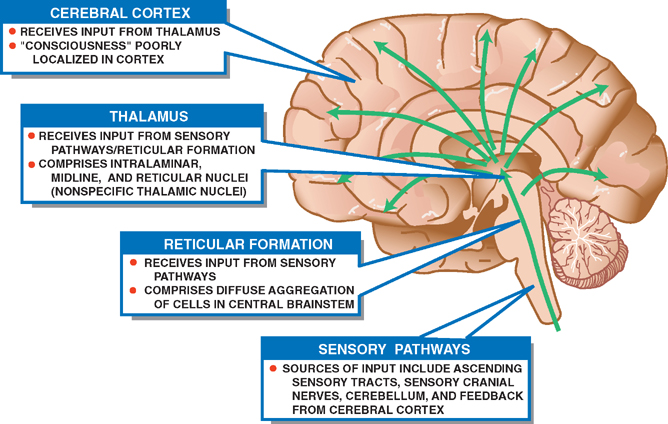

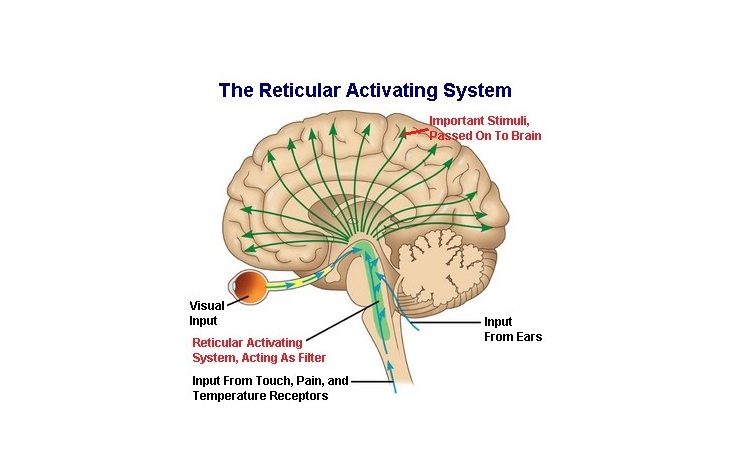

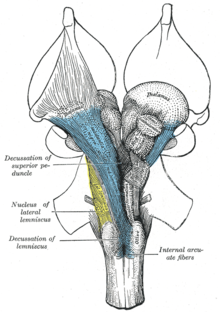

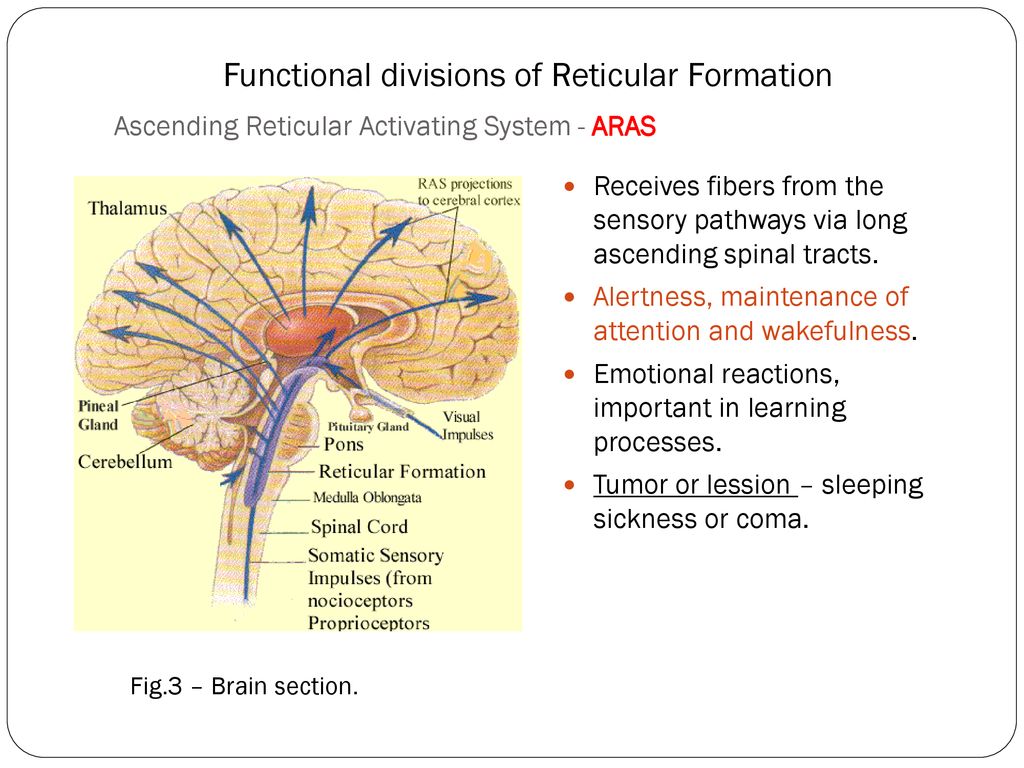
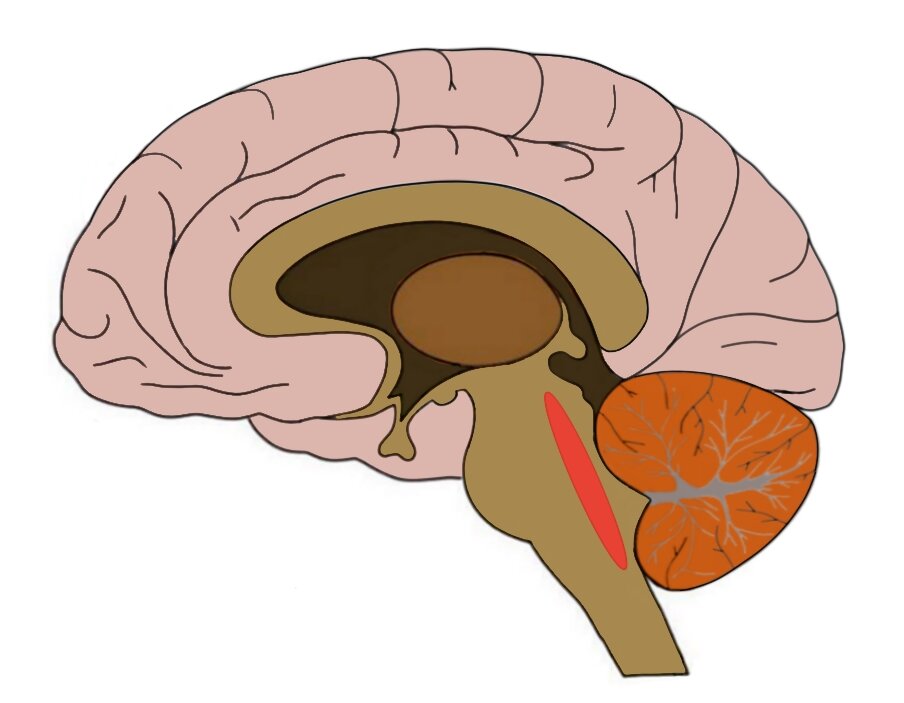
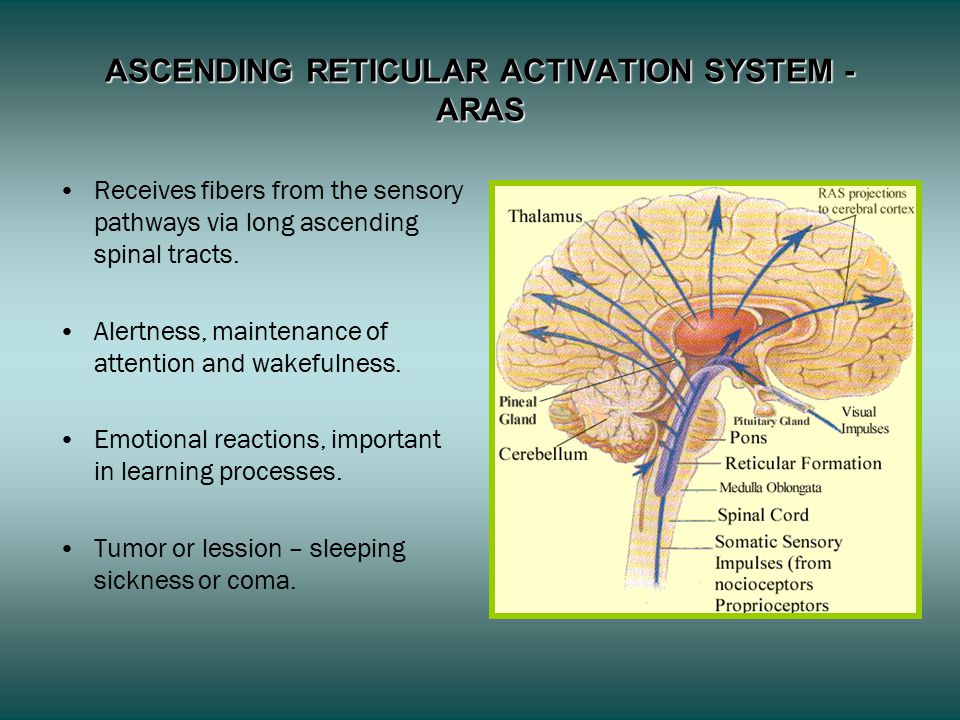


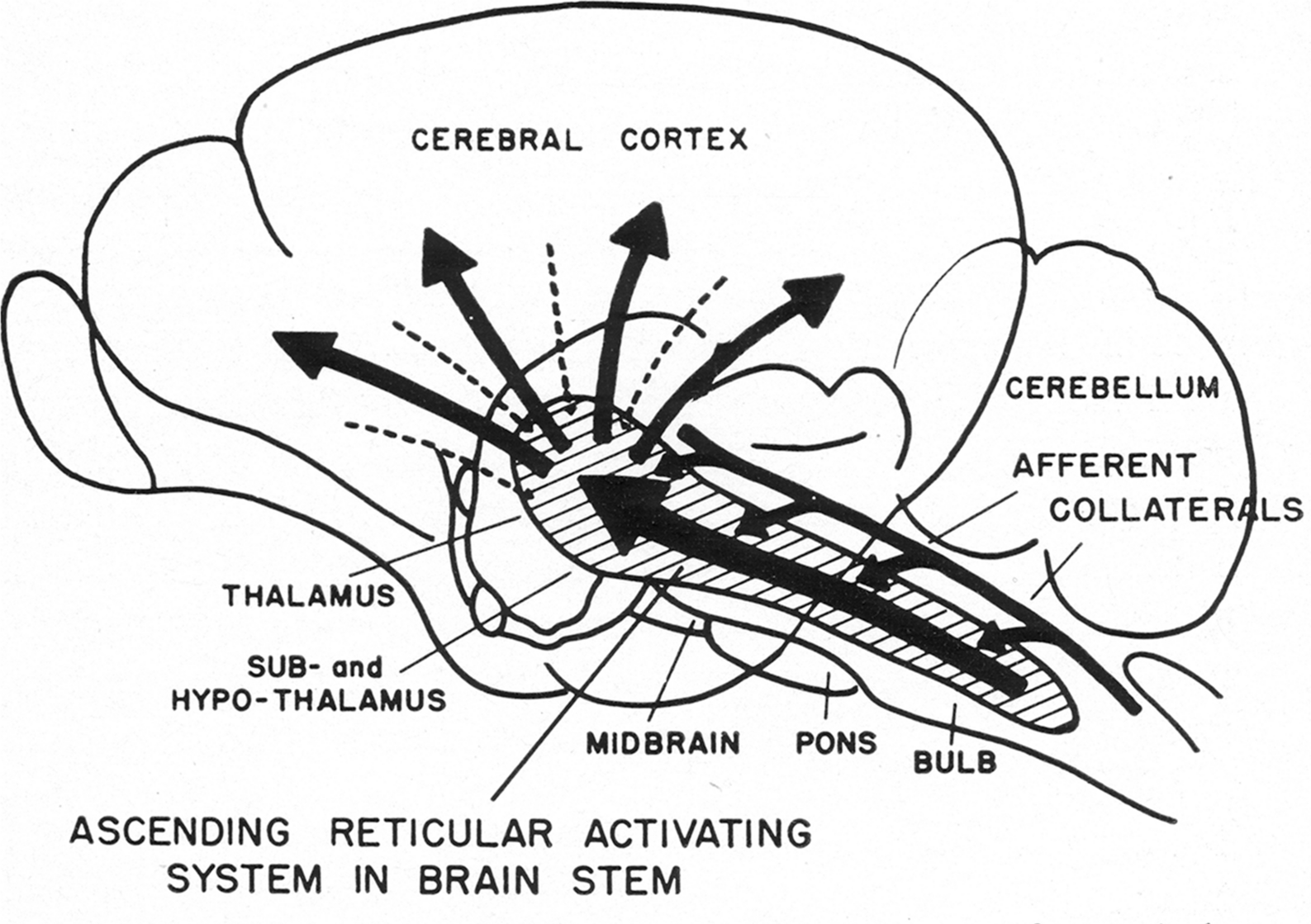












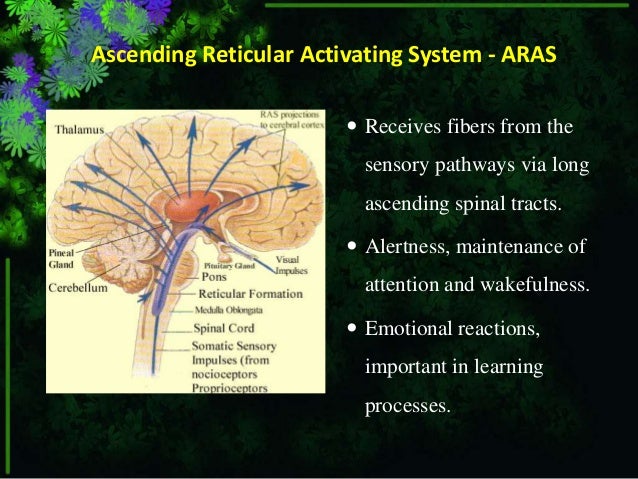
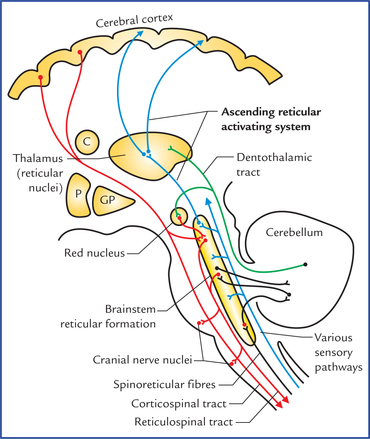





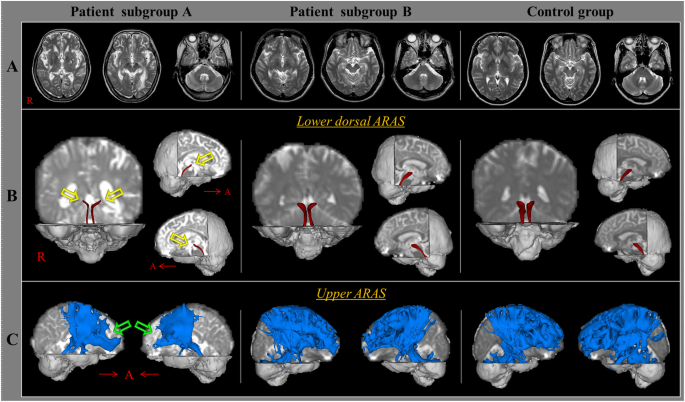
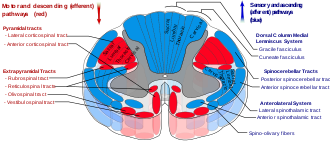
Post a Comment for "Ascending Reticular Activating System"